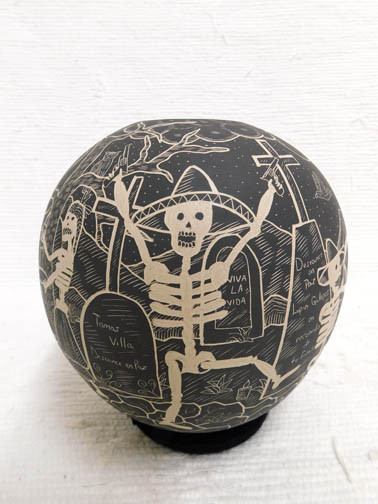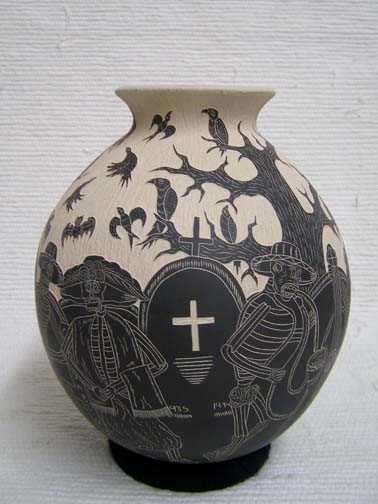 As the month draws to an end, we like to reflect on one of the great indigenous traditions that takes place this time of year. Day of the Dead will soon be here. What does this holiday mean for us?
As the month draws to an end, we like to reflect on one of the great indigenous traditions that takes place this time of year. Day of the Dead will soon be here. What does this holiday mean for us?
An Ancient Celebration of Life
Although we think of Day of the Dead as a modern Mexican celebration, the holiday has its roots in ancient indigenous beliefs. There is evidence that the Aztecs celebrated this tradition more than 3000 years ago, and that they may have inherited it from an even earlier civilization.
In Aztec culture, people spent a full month dedicating songs, ceremonies and offerings to the goddess Mictecacihuatl, Queen of the Dead and ruler of the harvest.
Today, Mexicans spend three days celebrating the memories of their loved ones and honoring the endless cycle of life. Among Native Americans, the holiday reflects their own spiritual beliefs about nature and the ever-present closeness of the spirit world.
A Day of Reverence
Many people misunderstand these celebrations. They are not meant as a mockery of death. They’re also not intended to be scary, the way Halloween traditions are.
In truth, cultures that celebrate Day of the Dead do so as a form of joyful reverence. These celebrations acknowledge the importance of death as part of the unending, unchanging cycle of life.
A Three-Day Celebration
Dia de los Muertos lasts for three days in Mexico. During these three days, the line dividing the spirit world from the living world disappears and the dead return to their families to feast, drink and dance.
The first day, October 31, is dedicated to the angelitos, that is, little children who have died. The second day, November 1, honors adults who have departed. On November 2, the living travel to their loved ones’ graves to say their final goodbyes until next year.
Day of the Dead Traditions In Mexico
In Mexican indigenous traditions, the focal point is a large, colorfully decorated altar called an ofrenda. People leave mementos or offerings on the altar to commemorate their loved ones.
Offerings of food and drink ensure that their loved ones will be nourished on their way through the underworld to heaven. The Aztecs believed that spirits took a long journey through the underworld before they reached heaven. Along the way, they needed nourishment.
Many people use marigolds, sugar skulls and offerings of food to tempt the dead to visit their homes.
Day of the Dead Traditions Among Native Americans
Rituals that honor nature, the earth and the souls of our loved ones are shared by many indigenous people. Many Native American rituals emphasize an awareness of earth, the harvest and the cycles of life.
When the two cultures meet, their intertwined beliefs and shared histories have produced art that is enduring and beautiful.
Mata Ortiz Pottery Is an Exceptional Example
At Kachina House, we look for art that honors both tradition and modern sensibilities.
Some of the finest pottery we’ve seen that blends both is the Mata Ortiz pottery created by Angel Guerrero Trillo and Heri Mora. These exquisite clay pots, vases, dishes and other works of art honor the Paquime tradition of making pottery by hand, with no pottery wheel.
Once open-pit fired, the pots are then sanded, painted and etched by hand in traditional style. This is what potters call the “coil and scrape” method. It is a historic, traditional technique that only some potters use today.
Make Mata Ortiz Pottery Part of Your Day of the Dead Traditions
These beautiful artworks honor this important celebration with etchings of skulls, skeletons and other symbols that blend the spirits of past and present.
We think you’ll find this pottery perfect for celebrating all your traditions. Come in today, or browse online, to see our full line of handcrafted Mata Ortiz pottery.


